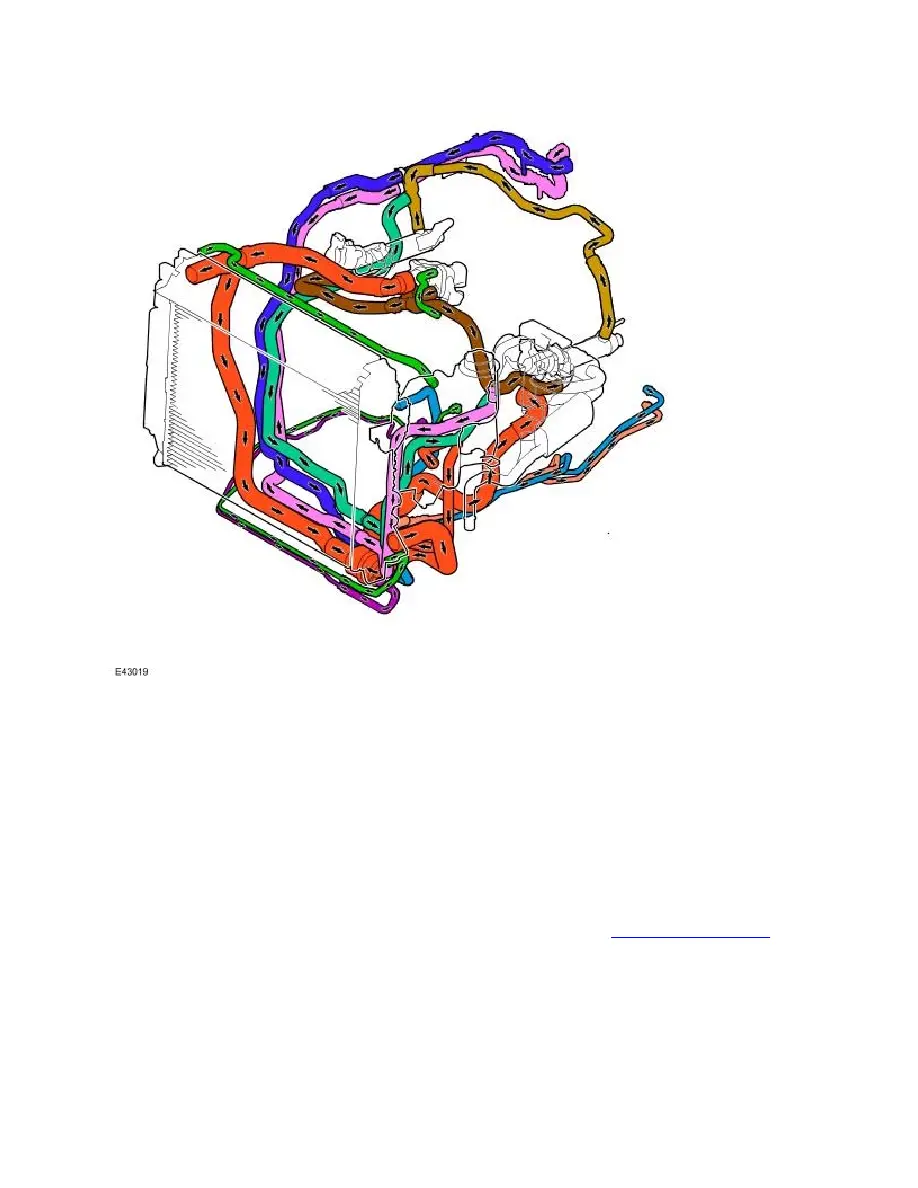LR3/Disco 3

When the engine is running the coolant pump is driven by the ancillary drive belt. This forces coolant to circulate around
the engine and heater, while the thermostat and bypass valve are shut. As the temperature and pressure increases the
bypass valve is forced open allowing coolant to circulate through the bypass valve. When the temperature reaches 82°C
(180°F) the main thermostat begins to open, allowing coolant to circulate through the main radiator. As the thermostat
progressively opens (fully open at 95°C (203°F)), the bypass valve progressively closes forcing any coolant through the
heater or radiator. Once coolant is allowed to circulate through the radiator, the transmission fluid (automatic models only)
and fuel coolers begin to receive coolant flow.
The increased coolant volume, created by heat expansion, is directed to the expansion tank through a bleed hose from
the top of the radiator. The expansion tank has an outlet hose which is connected into the coolant circuit. This outlet hose
returns the coolant to the system when the engine cools.
Coolant flows through the radiator from the top right hand tank to the bottom left hand tank and is cooled by air passing
through the matrix. The temperature of the cooling system is monitored by the ECM via the Engine Coolant temperature
(ECT) sensor located in the cylinder head. The ECM uses signals from this sensor to control the cooling fan operation and
adjust fuelling according to engine temperature. For additional information, refer to
Electronic Engine Controls
(303-14C
Electronic Engine Controls - 2.7L Diesel)
To control the cooling fan, the ECM sends a Pulse Width Modulated (PWM) signal to the cooling fan module (integral to
the ECM). The frequency of the PWM signal is used by the cooling fan module to determine the output voltage supplied to
the fan motor.
The ECM varies the duty cycle of the PWM signal between 0 and 100% to vary the fan speed. If the PWM signal is
outside the 0 to 100% range, the cooling fan module interprets the signal as an open or short circuit and runs the fans at
maximum speed to ensure the engine and gearbox do not overheat.
